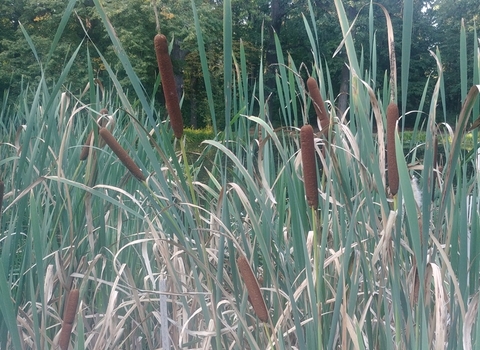
Stuart Edmunds
Great reedmace
Great reedmace is familiar to many of us as the archetypal 'bulrush'. Look for its tall stems, sausage-like, brown flower heads and green, flat leaves at the water's edge in our wetland habitats.
Scientific name
Typha latifoliWhen to see
January to DecemberSpecies information
Category
Statistics
Height: up to 2mCommon.
Habitats
About
Great reedmace, also know known as 'bulrush', is a familiar plant of freshwater margins, such as the edges of ponds, lakes, ditches and rivers. Its impressive stance - with long leaves and tall stems - makes it stand out from other wetlands plants. Its sausage-like flower heads are unmistakeable; these appear from June to August, but the plant persists through the winter, often dying back to a brownish colour from its usual green.How to identify
Great reedmace has tall stems bearing cylindrical, brown flower heads that are topped by a spire of smaller, male flowers. It also has long, wide, grey-green leaves.Distribution
Grows everywhere in the UK, but rarer in the north of Scotland.In our area
Reedmace is commonly found around pools and lakes with high nutrient content. They can also be found growing along canals and slow flowing rivers such as the Roden and the Tern.
Did you know?
In common with common Club-rush, great reedmace is also known as 'bulrush', but is perhaps the plant that this name is most likely to invoke.Reedmace is commonly found around pools and lakes with high nutrient content. They can also be found growing along canals and slow flowing rivers such as the Roden and the Tern.

